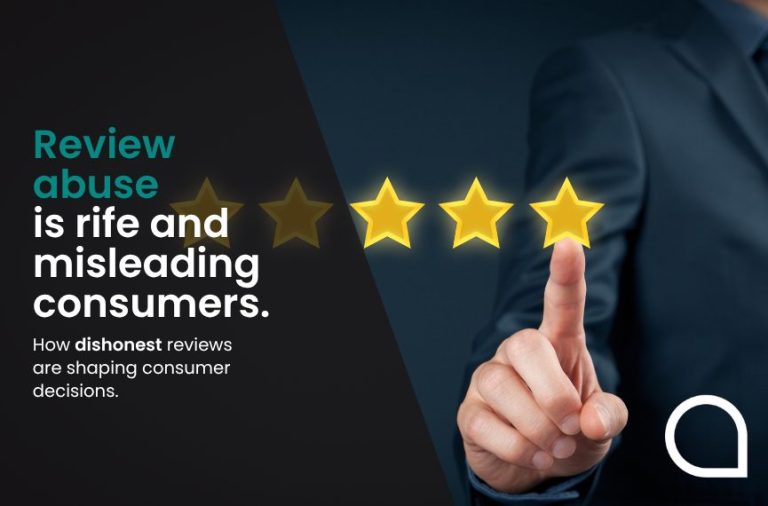
What are the penalties for AI misuse?
Embracing Artificial Intelligence (AI) whether for personal or professional use has clear advantages – and Google agrees. While it’s a common misconception that Google automatically
Most entrepreneurs, CEOs, and founders who have a website for their business will have some awareness of SEO, what it is, and how it works.
When you delve deeper into the subject, however, there’s a new set of concepts and terms that can initially appear confusing.
Good SEO takes into account a range of different factors that can help turn basic SEO into something more sharply focused and potentially powerful.
One aspect of SEO, often overlooked but critical to a website’s success, is technical SEO. So, what exactly is a technical SEO strategy, how do you use it to improve your website, and what benefits can it bring?
Simply carry on reading to learn from our comprehensive technical SEO guide.
Technical SEO, also known as on-site or on-page SEO, refers to fine-tuning the technical aspects of a website to increase the ranking of its pages on search engines like Google.
It’s sometimes also referred to as ‘technical optimisation,’ and as with other optimisation strategies, it’s about making it easier for search engines to crawl your website and understand what it finds.
As the name suggests, this crucial SEO component focuses on improving the technical elements on your website to help you achieve higher rankings in the search results (SERPs).
Some examples of technical SEO include optimising your website for mobile phones, compressing website images to improve loading speed, and submitting your site map to search engines.
Off-page SEO, on the other hand, uses other channels to help generate exposure for your website, build brand awareness, and engage your target audience.
This might consist of links from other websites (also known as backlinks), social media posts and marketing activity away from your website.
Quite simply, technical SEO makes it easier for search engines to find, crawl, and index your website.
If a search engine can not only find your content, but understand it, it’s more likely to rank higher in the SERPs and for the keywords and topics it discusses.
This is important because it typically leads to increased traffic from your target audience, and increased internet traffic from your key demographic means a greater likelihood of enquiries, leads, and sales. Getting technical SEO right is therefore essential to the success of many businesses.
The correct technical set-up on your page helps search engines understand exactly what your site is all about. It lets them know this is a website of high-value that is useful to its users and that the content is clear, valuable, and arranged in a way to help people find what they are looking for.
Furthermore, if your website loads quickly, isn’t stuffed full of dead links, and is secure to use, then Google’s crawlers are likely to give it an extra boost in the search listings. Why? Because it’s more helpful to the user if a website loads quickly, has live, clickable links, and is safe for them to use.
Attention to detail when it comes to the technicalities of your website will also make it easier to find, more likely to feature prominently in the search engines, and be easier for your users to negotiate.
All these elements of technical SEO will ultimately help your business.
We’ve mentioned some of the most important elements of technical SEO above, but the truth is, technical SEO is a complex process that involves constantly fine-tuning all the technical components of a website. As each of these are improved, Google will use a set process to assess the changes.
You may have heard of ‘crawling’ from other website owners that might have mentioned something along the lines of ‘Google crawled my website today,’ but what does this actually mean? Quite simply, crawling, in this context, refers to the search engine actively looking for new and updated pages on your website.
Using Google Analytics, you can submit a crawl request to speed up this process and highlight any new or updated pages that you want Google to find as soon as possible. This can help your pages to start ranking sooner, thereby boosting your online presence.
While ‘crawl’ and ‘index’ are closely-related processes and are often used synonymously, they are different actions. This is because crawling involves Googlebots finding new and update pages, while indexing refers to the storing and analysing of the content found on these discovered pages.
Indexing involves not only finding the content, but translating it and storing it accordingly in the Google index. Once the page has been indexed and found to be in line with Google’s Search Essentials (formerly known as Webmaster Guidelines), you should be able to find it in the SERPs.
Intertwined within the crawling and indexing actions is rendering. This action refers to the whole process of a Googlebot retrieving your page, accessing your content, and assessing it to help the search engine make sense of both the layout and structure of your website.
Efficient rendering is therefore essential to helping Google understand your website because less efficient rendering can impact the crawling and indexing process. Combined, crawling, indexing, and rendering allows Google to fully assess the technical elements of your website, helping the search engine to determine the intent and usefulness of your website.
While anyone with a Google Analytics account can use this basic process to help improve their knowledge of technical SEO, the complexity and sheer magnitude of technical elements on a website can make tackling on-page SEO seem overwhelming.
As a result, many websites will either hire an in-house SEO team or seek expert help from an experienced SEO agency. If you’d rather turn to the professionals, please don’t hesitate to contact the team of SEO specialists here at Aqueous Digital.
We’ll arrange your free, no-obligation consultation during which we’ll discuss which technical SEO strategy would be best to boost your business. Alternatively, if you’d like to learn more about technical SEO and how you can improve your website’s on-page SEO, simply take a look below.
At its most basic, technical SEO helps search engines find, crawl, and index the pages on your website. While this is a good start, technical SEO needs to go further if you want to show up alongside (or even in front of) your competitors.
In fact, there’s countless things you can do to improve the technical optimisation of your website, and too many to share in a single article. There are, however, a few key points that you should try and prioritise:
The faster your website loads, the more likely it is to be higher placed in search results. Think about optimising your website images by enabling compressing and browser caching.
You can check the current speed of your site with tools such as Pingdom and Google PageSpeed. Alternatively, Google recommends using a browser extension such as Lighthouse to check the technical aspects of your website.
It must be optimised for mobiles – more users are browsing the internet on their phones and other mobile devices than via a computer. Google and other search engines therefore often prioritise websites that are easily accessible for mobile devices.
While you may believe that only websites that sell a service or product online require an SSL certificate, every website should actually include one. This certificate provides extra security for visitors by confirming identities, strengthening trustworthiness, and protecting data in line with the latest GDPR guidelines.
If you buy an SSL Certificate, you’ll not only make your site more SEO friendly, but you’ll also make it more secure, effectively waving a green flag in front of your customers!
Always submit your site map to search engines. These are lists of the pages on your website and they’re critical because they allow search engines to find and index the pages of your website that are important to both your business and your audience.
Site maps are easy to create and many website building platforms provide a plug-in that creates one for you if you’re not sure where to start.
If you want to improve your technical SEO further, there are a few other points you can consider. A lot of these involve the structure and layout of your site. For instance, you should try to create a flat, organised structure.
In practice, this means that your site’s pages should only be a few links away from each other. Don’t make information difficult to locate. Page URLs should follow a consistent structure that makes it easy for the users to understand where they are on your site. This also helps Google crawl your site for information.
Although Google’s search results are provided at a page level, they like to have a sense of where the page fits into the bigger picture of the site.
Breadcrumb Navigation is a secondary type of site navigation that can make it easier for users to know where they are on your site, and, in turn, make your site more appealing to search engines.
In order to ensure your website can be quickly and easily crawled, indexed, and rendered by Google, you’ll need a technical SEO strategy. This strategy should highlight the various areas of weak or inefficient technical SEO that must be improved if you want to reap the rewards of ranking higher in the SERPs.
Instead of tackling these weak areas of technical SEO in no particular order, the technical SEO strategy should help you to identify the most important elements (those that will make the biggest difference to your website). You can then prioritise accordingly and methodically work your way through your technical SEO checklist.
Naturally, your technical SEO strategy will vary depending on which areas require work. However, common tasks on a technical SEO checklist include improving site speed, streamlining the user experience (UX), ensuring the site is as safe and secure as possible, and eliminating duplicate or HTTP 404 error pages.
If you haven’t got the budget to enlist your own technical SEO specialists or would prefer a more professional approach to SEO, contact Aqueous Digital today.
We have years of invaluable experience helping our customers to achieve a wide range of business goals (including increasing turnover and boosting organic traffic) using technical, on-page, and off-page SEO. Crucially, we only use ethical and long-term SEO techniques to deliver these impressive results.
Unlike other SEO agencies out there, we don’t overpromise and can’t guarantee you’ll end up in Google’s top spot for your preferred keywords within a week. Instead, we gradually and sustainably grow the visibility of your business and help your website organically stand out from your competitors.
If you’d like to find out more about our technical SEO services and costs, please feel free to get in touch with out expert team by calling us on 0800 285 1424.
Alternatively, you can also submit your enquiry via email using the address agency@aqueous-digital.co.uk or head online to fill out our convenient online contact form.
Once we’ve received your enquiry, you can rest assured an experienced member of our team will be in touch soon to find out more about your technical SEO requirements. We’ll then conduct a free website health check and even arrange a no-obligation consultation.
Regardless of how you choose to get in touch, why not take your first step closer to technical SEO and a more successful business? Serving clients in the Sheffield area, we welcome all enquiries from Sheffield-based businesses as well as companies located further afield.
Why pillar pages are the foundations of a successful content strategy
How to conduct a thorough digital marketing audit of your website
Why digital marketing is important to business owners
Digital marketing trends to get ahead of the curve
Short-form vs. long-form content: Which is better for your website?
Digital marketing channels: Which one should you choose?
Content Optimisation: How to improve existing content on your website
How AI is becoming more prominent in digital marketing
How to create a results-driven digital marketing campaign
SEO for YouTube: How to optimise YouTube videos for search
How to boost your website’s domain authority
What is Evergreen Content and why does it matter for SEO?
Why we build backlinks to your website
How to develop a content strategy for SEO
Content is King. What is content marketing?
Creating great content: How to write for SEO
How digital marketing has changed over the years
How video content can elevate your website
Top 20 Facts about Manchester You Never Knew
Aqueous Digital’s Ultimate Guide to the cost of SEO in the UK
Aqueous Digital’s Guide to the Top 501 SEO and Digital Marketing Terms
How video content can elevate your business

Embracing Artificial Intelligence (AI) whether for personal or professional use has clear advantages – and Google agrees. While it’s a common misconception that Google automatically

Whether it’s Google’s AI (artificial intelligence) Overviews or AI-powered SEO (search engine optimisation) tools, this emerging and fast-developing technology has fundamentally altered the SEO landscape.

The widespread creation and adoption of AI (artificial intelligence) tools has undoubtedly changed the way that search engine optimisation (SEO) services for websites are performed.

While Google enjoys the biggest share of the search engine market (around 90%, according to StatCounter), the second-largest search engine, Bing, shouldn’t be overlooked. Following Bing’s

Trust: online searchers are ready to give it, and businesses want to earn it as quickly as possible, but how can you accurately assess the

I wrote recently about the ridiculous situation of being asked to leave a review for a parking space, but what I encountered yesterday is, I